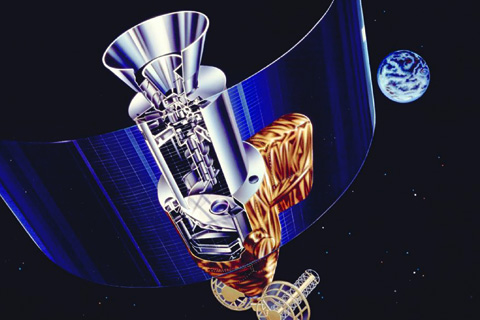About Geostationary Meteorological Satellite "Himawari" (GMS)

|
The Japanese Geostationary Meteorological Satellite (GMS) series, also known as its nickname, "Himawari" (meaning a "sunflower"), is on the geostationary orbit at 140 degrees of east longitude to carry out weather observation from space being part of the World Weather Watch (WWW) project of the World Meteorological Organization. The images of the earth and clouds sent from this satellite series have been used in many areas such as weather forecasts in TV or newspaper; therefore, it is strongly connected to our daily life. |
|---|
Major Characteristics
Himawari(GMS)
| Launch Date | 7/14/1977 |
|---|---|
| Launch Vehicle | Dalta Laucnh Vehicle (U.S.) |
| Launch Site | Kennedy Space Center |
| Initial weight after stationing | 325kg |
Himawari-2(GMS-2)
| Launch Date | 8/11/1981 |
|---|---|
| Launch Vehicle | N-II Launch Vehicle (N8F) |
| Launch Site | Tanegashima Space Center |
| Initial weight after stationing | 296kg |
Himawari-3(GMS-3)
| Launch Date | 8/3/1984 |
|---|---|
| Launch Vehicle | N-II Launch Vehicle (N13F) |
| Launch Site | Tanegashima Space Center |
| Initial weight after stationing | 303kg |
Himawari-4(GMS-4)
| Launch Date | 9/6/1989 |
|---|---|
| Launch Vehicle | H-I Launch Vehicle (H20F) |
| Launch Site | Tanegashima Space Center |
| Initial weight after stationing | 325kg |
| Attitude Control | Spin-stabilized |
| Design life | 5 years |
| Dimensions | Cylindrical, Diameter: 214.6cm Height: (before AKM separation)444.1c, (after AKM separation)345.1cm |
Himawari-5(GMS-5)
| Launch Date | 3/18/1995 |
|---|---|
| Launch Vehicle | H-II Launch Vehicle (3F) |
| Launch Site | Tanegashima Space Center |
| Weight | 747kg (at launch), 344kg (beginning of life) |
| Attitude Control | Spin-stabilized |
| Design life | 5 years |
| Dimensions | Cylindrical, Diameter: 214.6cm Height: (before AKM separation)444.1cm, (after AKM separation)353.9cm |